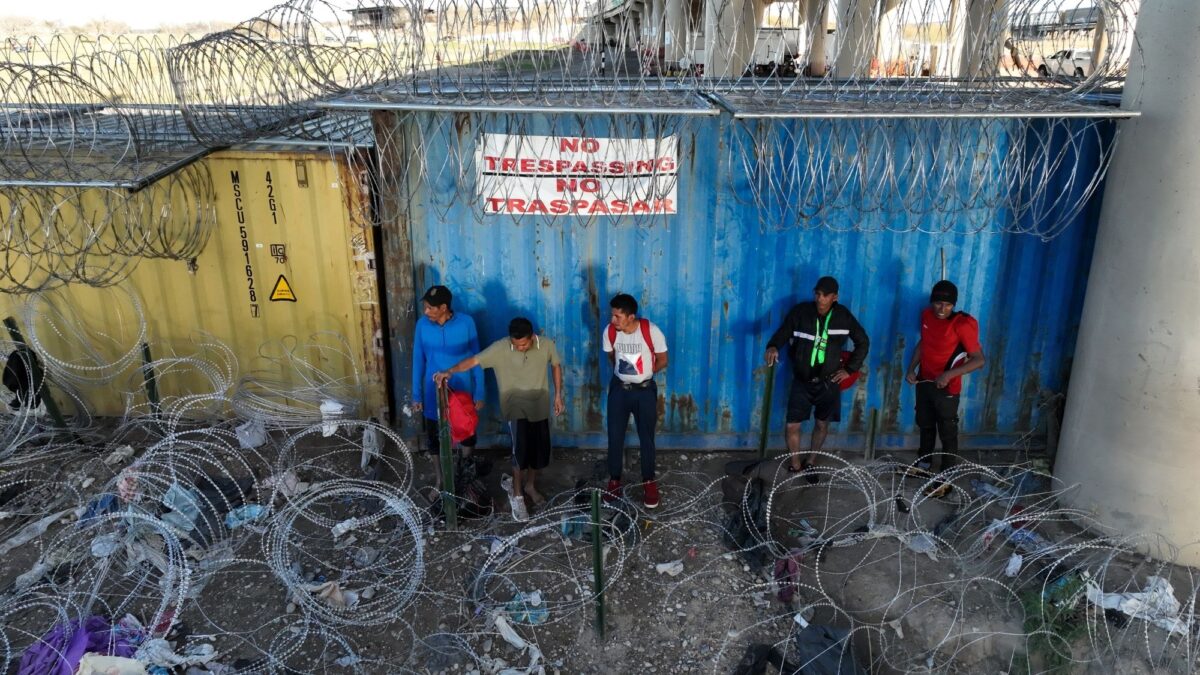Removing The Confederate Memorial At Arlington Isn’t About Racial Reconciliation, It’s About Political Power
Amid the steady stream of horrible economic news this week you might have missed a rather bland headline from the Associated Press: “Panel advises removal of Confederate statue at Arlington.”
The news itself, that an independent commission charged with renaming U.S. military bases with Confederate names has recommended the Confederate memorial at Arlington National Cemetery be dismantled and removed, might seem painstakingly obvious these days.
Of course they want to get rid of the Confederate memorial, you might be thinking. In a post-George Floyd world, we have to reckon with our racist past and confront present-day white supremacy, which is apparently everywhere. Didn’t you know that Fort Bragg and Fort Hood, for example, are named after Confederate officers? That the USS Chancellorsville was named after a battle the Confederates won?
Confederates, we’re told, were all evil racist traitors, and the only reason there’s a memorial for them at Arlington is because other racists, who came later, put it up because they were mad about losing the Civil War and wanted to keep white supremacy going. And anyway, the only people who would object to renaming military bases and removing memorials are present-day racists whose opinions don’t count. Right?
That well-worn narrative, more or less embedded in the discourse at this point, not only distorts history but obscures the deeper truth our history reveals, which is that we’ve become a deranged, small-minded, angry people. Removing war memorials from military cemeteries is what societies do when they’re imploding on themselves, when the bonds of civic life have all but disappeared along with any notion of a shared past, to say nothing of a common vision for the future.
It was not always this way. At the turn of the last century, our political leaders seemed to understand that the survival of a vast republic like ours depended on civic virtues that include reconciliation, forgiveness, and actual tolerance. They knew this because many of them had lived through and participated in the Civil War. They had seen and felt for themselves what happens when a nation turns on itself, and they were determined not to let it happen again.
Ironically, the history of the Confederate memorial at Arlington is a perfect case in point. It was first conceived of by President William McKinley, a decorated Union veteran who saw combat at Antietam and in the Shenandoah Valley. During his presidential campaign in 1896, he witnessed untended Confederate graves in the South, and it disturbed him. At the time, the federal government prohibited the decoration of Confederate graves at Arlington, as it had since the end of the Civil War.
McKinley thought it was time for that to change. At a peace jubilee in December 1898 celebrating the end of the Spanish-American War (the first time since before the Civil War that Americans from both North and South were engaged in a military conflict with a foreign power), McKinley announced that the government would henceforth tend to the graves of Confederate dead buried in federal cemeteries, saying they represented a “tribute to American valor.”
The speech prompted calls to disinter Confederate remains at Arlington, which were dispersed throughout the cemetery and mingled with Union graves, and rebury them in a specially designated Confederate section. Congress drafted legislation and provided funding, and McKinley signed the bill in June 1900.
The legislation didn’t mention a memorial, but the plans for the Confederate section laid out graves in a circular pattern around a cruciform set of walkways with a central grassy area that the Army Corps of Engineers marked on the plans with an “M,” for memorial.
It would take another 14 years for private groups (including Union veteran organizations) to raise the money and erect the Confederate memorial that stands in Arlington today. Anyone who has seen it knows that it reflects the sentiments of reconciliation and national unity that McKinley originally had in mind.
The memorial’s central figure is a woman, meant to represent the South, crowned with an olive wreath, a symbol of peace. In her extended left hand is a laurel wreath and in her right hand is a pruning hook, which rests upon a plow. Under the figure is an inscription, a quote from the Book of Isaiah, “And they shall beat their swords into ploughshares and their spears into pruning hooks.”
That is to say, the monument’s central theme is reconciliation and peace — beating swords into ploughshares. It commends the South for turning away from war while also honoring their war dead.
Critics will note how the Latin inscription on the monument’s base contains a reference to the “lost cause,” as if that somehow vitiates the overarching purpose and theme of the work. It does not. Authentic reconciliation, after all, involves some degree of compromise, and at the time — within a living generation of Civil War combat — it was enough for North and South to declare together that sectionalism was finished and that the country would bind up its wounds and be united again.
Something like that is unimaginable today. President Joe Biden habitually goes out of his way to demonize and slander vast swaths of the country who disagree with him, even as his Justice Department works to criminalize Democrats’ opposition. Just this week, Biden’s White House convened a summit (misleadingly named “United We Stand”) to advance the false narrative that America’s number one threat is domestic terrorism fueled by white supremacy. The stunt is designed, like so much else the president says and does, to foment division and hatred among Americans, to sort us into warring factions.
So too with the push to dismantle the Confederate monument at Arlington, which is almost a perfect inversion of its original purpose. There is only one reason to remove the monument now, in 2022, and it has nothing to do with past or racial reconciliation and everything to do with wielding political power in the present.
Not that any of this should come as a surprise. Forging actual unity in times of civil strife requires more circumspection and humility than our leaders today can muster. McKinley, who in his youth had actually fought Confederate soldiers, watched them kill and maim his comrades, was nevertheless able to reconcile and forgive — and urge the nation to do likewise.
Today we enjoy prosperity and comfort unimaginable to Americans of McKinley’s time. Yet we have precious little of the gratitude, generosity, and grace he was able to show his erstwhile enemies. But then, McKinley did not live in a dying civilization.
John Daniel Davidson is a senior editor at The Federalist. His writing has appeared in the Wall Street Journal, the Claremont Review of Books, The New York Post, and elsewhere. Follow him on Twitter, @johnddavidson.
" Conservative News Daily does not always share or support the views and opinions expressed here; they are just those of the writer."




